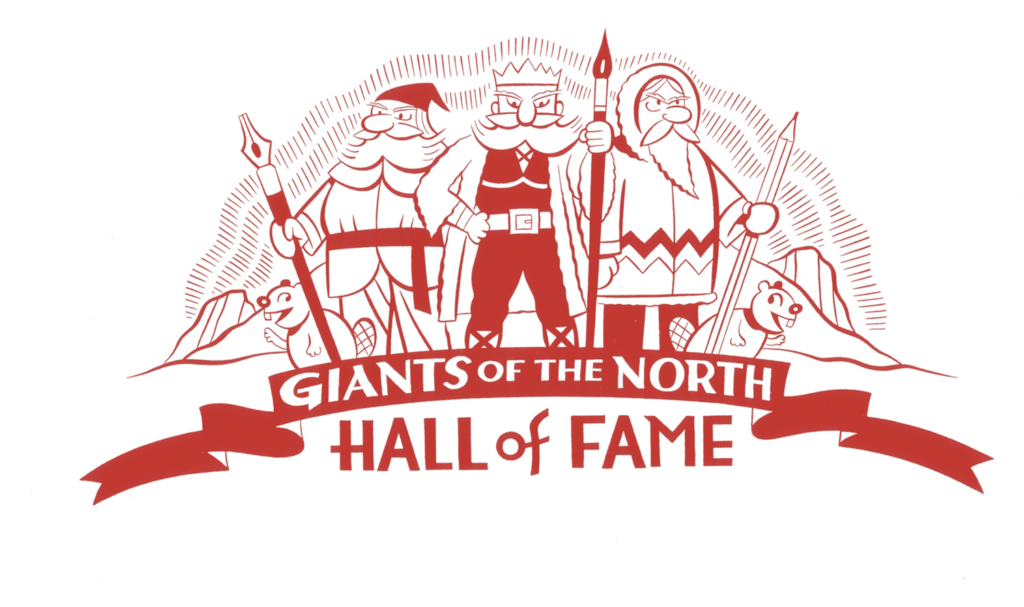
This page is currently under construction. Thanks for your patience.
Duncan Macpherson (1924-1993)
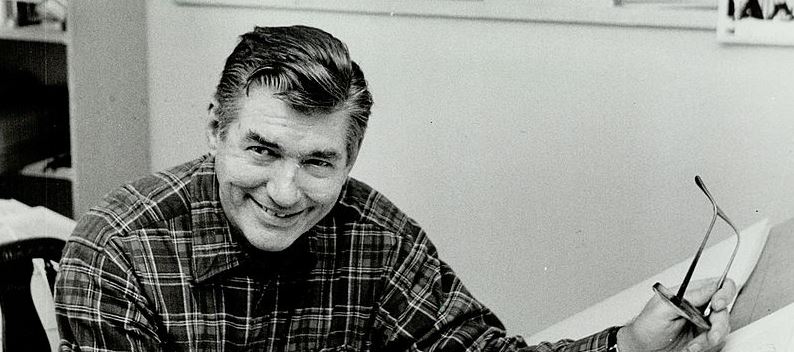
Inducted in 2018
Duncan Macpherson was born in Toronto in 1924. He joined the RCAF in 1941 and served in England, where he familiarized himself with British political cartooning. After the war he studied graphic arts, first at the Boston Museum of Fine Arts and then at the Ontario College of Art, graduating in 1951. He very quickly became a first-rate illustrator for a number of magazines. Pierre Berton was then managing editor at Maclean’s, but when he moved to the Toronto Star in 1958, he talked Macpherson into trying his hand at political cartooning for the newspaper’s editorial page.
Duncan’s success was instantaneous. His portrayals of the glad-handers, puppets and sketchy characters to be found in municipal, provincial, federal and international politics were enormously popular with the Star’s readers. Before Macpherson came on the scene, Canadian cartoonists’ styles were influenced by the fashion south of the border. Macpherson’s brushwork was bold, inventive and unique, a new direction for cartooning in English Canada.
He was the first to hire an agent to negotiate his salary. Being apolitical, he insisted on having the freedom to express his 360-degree vision by striking out at the right, the left and the centre — or whoever else attracted his attention. He did this without confining himself to the editorial viewpoint of the Star. (text prepared by Terry Mosher)
Katherine Collins (b. 1947)
Inducted, 2017
Walter Ball (1911–1995)
Inducted, 2020
JW Bengough (1851-1923)
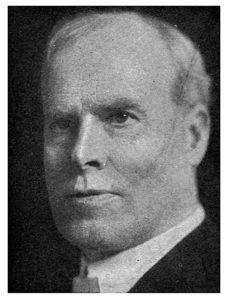
Inducted, 2006
John Wilson Bengough was one of Canada’s earliest cartoonists, as well as an editor, publisher, writer, poet, entertainer, and politician. Bengough is best remembered for his political cartoons in Grip, a satirical magazine he published and edited, which he modelled after the British humour magazine Punch. In it he lampooned the political and social culture of Canada in the years following Confederation.
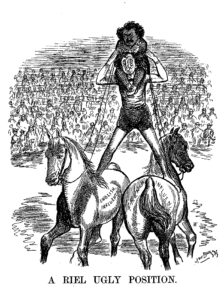
Born in Toronto to Scottish and Irish immigrants, Bengough grew up in nearby Whitby, where after graduating from high school he began a career in newspapers as a typesetter. The political cartoons of the American Thomas Nast inspired Bengough to direct his drawing talents towards cartooning; a lack of outlets for his work drove him to found Grip in 1873. The Pacific Scandal gave Bengough ample material to lampoon, and soon Bengough’s image of Prime Minister John A. Macdonald achieved fame across Canada. After Grip folded in 1894, Bengough published books, contributed cartoons to Canadian and foreign newspapers, and toured giving chalk talks internationally.
Bengough’s fluid, devastating cartoons dealt with the shenanigans of MacDonald and the rebellion of Louis Riel, as well as issues like women’s rights, prohibition, and poverty. Considered by many to be the father of English-language caricature in Canada, Bengough and Grip were hugely influential and deserve a special place in the history of Canadian cartooning –a true Giant of the North.
Margaret Bloy Graham (1921–2015)
David Boswell (b. 1953)

Inducted, 2011
David Boswell is a cartoonist, illustrator, and photographer based in Vancouver, British Columbia and is the creator of the series Reid Fleming, World’s Toughest Milkman.
Boswell grew up in Ontario (London, Hamilton, and Dundas) and studied film at Sheridan College, from which he graduated in 1974. After graduation, Boswell attempted to earn a living as a cartoonist and his first full-page comic, “Heart Break Comics” was published in The Georgia Straight starting in 1977. Buoyed by the success, Boswell moved to Vancouver in 1977, and in 1978 he launched Reid Fleming, World’s Toughest Milkman, an instantly popular character who graduated to his own comic book in 1980.
Based on a childhood bully with the same name that Boswell knew growing up, Fleming employs an extremely aggressive means in delivering his dairy products. His supervisor is Mr. Crabbe who has little, if any, patience with Reid. If it was up to him, Reid would have been fired years ago, but Reid’s employer, Mr. O’Clock, prefers to just dock Reid’s pay for all the milk trucks he wrecked in his recklessness. O’Clock’s reticence to fire Reid may be due to the fact that he is Reid’s biological father, as implied in issue #5 (#6 under the Deep Sea Comics imprint); at the end of the issue, a scene set in the future shows that Reid is now president of the company.
Boswell’s influences include film directors Josef von Sternberg and Luis Buñuel, composer Hector Berlioz, comedians Buster Keaton, and W.C. Fields, and humourist Robert Benchley, as well as early Hollywood and European cinema stars, and he often features references in his work.
Alberic Bourgeois (1867-1962)
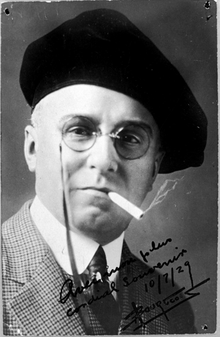
Inducted, 2005
Albéric Bourgeois is credited with creating the first continuing comic strip to use word balloons in Canada (and arguably the first in the francophone world). Born in Montreal, Bourgeois went to work for the daily newspaper, Le Patrie. There he created editorial cartoons, illustrations, and comic strips. “Les Adventures de Timothée” debuted in January, 1904.
Timothée was a huge-nosed little man, well-intentioned but brutally misunderstood. In daily and colour weekend strips, Bourgeois chronicled Timothée’s series of misadventures, stumbling through a world that seemed to have it in for him –a quintessentially modern perspective. Albéric Bourgeois is a Giant of the North for creating Canada’s first comic strip star!
George Feyer (1921-1967)
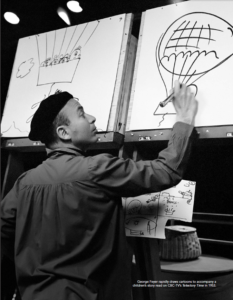
Inducted, 2006
The cosmopolitan genius of Canadian magazine cartooning, George Feyer was born in Hungary but carved out a brilliant artistic career in Canada and the U.S. Known to many for his CBC Televison appearances, Feyer was the master of the slapstick gag panel that mixed pantomime action, irreverence, and surrealism. His quickly-rendered philosophical doodles showed up everywhere: in advertising, magazines, newspapers, books, on TV –and even on people!
Born into a privileged Hungarian Jewish family in 1921 he lived through both Fascist and Nazi regimes, experienced the brutality of the Siege of Budapest first-hand, then emigrated to Canada where he made his irreverent mark in the mid-century Toronto arts and culture scene – becoming best friends with Pierre Berton and chumming around with Marshall McLuhan, June Callwood and Peter Munk. But despite his out-sized talents and abundant potential, Feyer ended up dying in Hollywood at the age of 47.
You can read more about the life of George Feyer in this profile “The Twisted Genius of George Feyer“ by Brad Mackay.
Jimmie Frise
Fred Kelly (1921–2005)
Inducted, 2021
Rand Holmes
Born in Truro, Nova Scotia in 1942, Rand Holmes is best known for his seminal underground comic strip Harold Hedd which ran in the Vancouver’s alt-weekly The Georgia Straight in the 1970s.
An avid admirer of U.S. cartoonists Will Eisner and Wally Wood as he was growing up in Edmonton, Holmes first comics were published in his 20s in Harvey Kurtzman’s Help!.
After struggling to make a living as a cartoonist and sign painter in Alberta, in the late 1960s Holmes moved to B.C. to seek out work as an illustrator. In short order, he landed freelance work drawing covers for the left-leaning Straight, and not long after debuted his most popular creation. A bespectacled hippie who spent his time dealing dope and plaguing Vancouver’s tourists, Harold Hedd quickly became a counter-culture icon.
Lynn Johnston
Over the last three decades, Lynn Johnston has earned a place among the world’s most successful and best-loved cartoonists thanks to her work on the internationally syndicated For Better or For Worse. The comic strip, which follows the trials and triumphs of the fictional Patterson family, appears in more than 2,000 newspapers and boasts millions of readers.
Martin Vaughn James
Martin Howard Vaughn-James was born “during an air-raid” in Bristol, England on December 5, 1943 according to a tongue-in-cheek biography in Night Train, his first novel. Whether or not this detail is 100% true, the intent is clear. Vaughn-James’ spent his childhood growing up in postwar British towns such as Birmingham, which exposed him to the kind of bombed-up landscapes that would later inform so much of his imagery.
Peter Whalley
Peter Whalley is one of the most iconoclastic and inventive cartoonists Canada has ever produced. Born in Brockville, Ontario, Whalley began contributing illustrations, gag & political cartoons to national publications beginning in the 1940s. His work appeared in Maclean’s, The Standard (Weekend) Magazine, and others all through the 1950s and 60s. He produced several books with the writer Eric Nicol, including An Uninhibited History of Canada & 100 Years of What?
In addition, Whalley produced several solo collections of cartoons, several as an early “self-publisher,” including Hyperbole, Northern Blights, Phap (the Pornographics of Politics), & The Man on the High Wire. Using a broad, “cartoony” style, this Giant of the North lambasted such Canadian sacred cows as the Group of Seven, the Welfare State, and every conceivable aspect of politics. Whalley’s savage and cynical cartoons timelessly capture the hypocrisy, mediocrity, and just plain silliness that characterizes so much of life in Canada.
Doug Wright
Inducted, 2005
Doug Wright created the long-running comic strip Doug Wright’s Family. Born in England, Wright came to Canada in 1938. His cartooning career really began when he landed a job as editorial cartoonist for the Montreal Standard. In 1948 he took over the reins of Jimmy Frise’s “Juniper Junction” strip. Wright created “Nipper”, a mostly silent comic strip, for the Standard (later Weekend Magazine) in 1949. Wright excelled at the depiction of childhood and the daily charms and frustrations of late-20th Century domestic life.
